At the intersection of art and technology, the ever-increasing importance of screen graphics in film reflects the expanding arc of human-computer interaction in our everyday lives and the pervasive presence of glass screens around us. It gives me great pleasure to welcome John LePore of Perception to the ongoing series of interviews with designers and artists that bring user interfaces and graphics to the big screens.
In this first of two parts on the work that Perception has been doing in the last few years John talks about his background in motion graphics, Perception’s first foray into the world of FUI on “Iron Man 2”, the ongoing collaboration with Marvel on “Avengers” and “Captain America: The Winter Soldier”, the initial explorations around defining and refining screen graphics elements, the evolution of FUI over the years that tries to stay ahead of the evolution of technology and UI in the real world, and balancing between showing realistic interactions and the primary directive of supporting the story. He also dives deep into the automotive interfaces of “The Winter Soldier” and the pace of changes in the automotive industry in the real world, how we can improve the ways we interact with devices and information, and the work Perception is doing outside the realm of feature film productions.
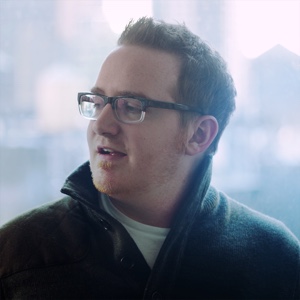 Kirill: Please tell us about yourself and your path so far.
Kirill: Please tell us about yourself and your path so far.
John: I’m John LePore and I’m the creative director at Perception. I’ve been working with Perception since 2006. A lot of people would say that it’s an unusually long time period to be working at one particular studio. At least on our side of the industry people tend to hold a full-time position for around 18 months at a time or so. I’ve had a great time working here since then.
Going all the way back, I’ve studied traditional design in school. I’ve always been fascinated with and really curious about motion graphics. Back then – around 2002 – motion graphics was just about to explode in the industry. I discovered it just as it was beginning to rapidly evolve and change. As soon as I got to it, I instantly knew that it was it, that it was absolutely what I wanted to do. Before that I wondered whether I want to do print design or web design or maybe some stuff that I see on television. Learning about After Effects and motion design in general, seeing studios like MK12 which was the first one I ever came across – just blew my mind.
Since then I’ve worked at a lot of studios, and then found Perception which is, more than anything, a really fun studio to work at. The owners are really nice to work with, giving me an almost terrifying amount of responsibility which I really appreciate. As I was working here there projects shifted and changed.
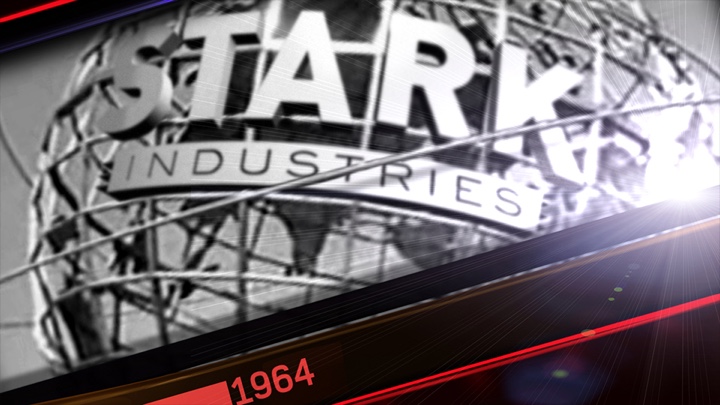
Part of the initial explorations for the Stark Expo keynote sequence in Iron Man 2. Courtesy of Perception.
A huge breakthrough for us was back in 2010 with Iron Man 2. That was our first feature film that we worked on. We had a long-standing relationship with Marvel, mostly helping them with small projects. When Iron Man 2 came along, we were contacted by the Marvel team for a couple of elements. It was a great opportunity, an almost shocking thing to have our first feature film to be a really major one in a popular franchise. It was a really exciting opportunity for us.
We got into interface elements within Iron Man 2, but we didn’t do futuristic interfaces before it. We had done work with an information design angle to it. A key project in my career in that area was in 2007. The network ABC asked us to help them redesign their election graphics coverage. We had upcoming elections of 2008, and they wanted to have a whole graphics package for it that felt really great and innovative. We were figuring out different ways to visualize the data, and I loved it.
I like working with elements in motion graphics that are more graphic design based. I certainly appreciate a lot of things that go into the traditional visual effects, but my heart is always with the traditional graphic design. So a project like this election coverage gave us an opportunity to really dive deeper into things like visualizing information or focusing on legibility that you don’t traditionally get an opportunity to do with motion graphics. Motion graphics is usually about making one specific message really shiny, make it pop off the screen. And that project had more of a cerebral approach to it.
During that project I already started to thing about taking inspiration from the early work by Mark Coleran. I know there were other people working at that time, but he seemed to be the guy who was doing these futuristic interfaces.
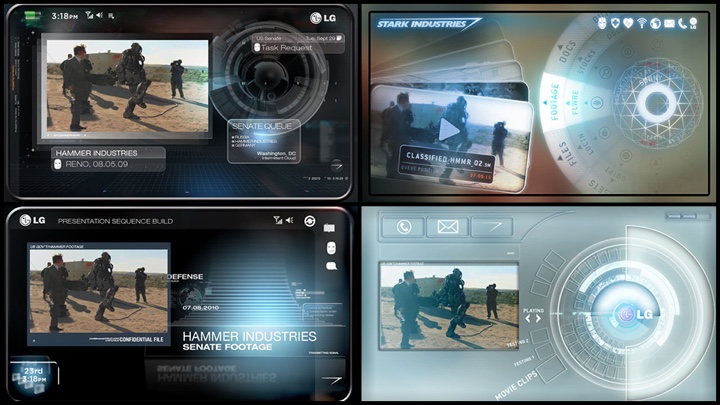
Conceptualizing the Stark Smart Phone in Iron Man 2. Courtesy of Perception.
Kirill: That’s my impression as well that he appeared to be almost the only one doing screen graphics until somewhere around 8-10 years ago.
John: There were a couple of other guys, but it seemed to be that he was the expert, the master, the Yoda of futuristic user interface. I took a lot of inspiration from him. As I and other people at the studio were working on the election project, we were thinking how awesome it would be to make these interfaces for sci-fi films. That was a pretty early goal for us.
So when Iron Man 2 came along, we were tasked with a really simple challenge. In an emergency turnaround they needed on-screen graphics projected for the Stark Expo. They had a massive screen on the stage with Tony Stark standing in front of it presenting. They needed more traditional motion graphics playing in the background on this huge practical screen.
While we were reviewing design concepts for that scene with the team at Marvel, there was one concept that they didn’t ultimately approve. But when they looked at it, we literally heard someone in the background on the conference call saying that this one element reminded him of Tony’s glass phone. And on the other side of the call we were asking if he did just say glass phone with holograms on it. We were really excited at the prospect of that, and they told us not to worry and focus on the Expo screen.
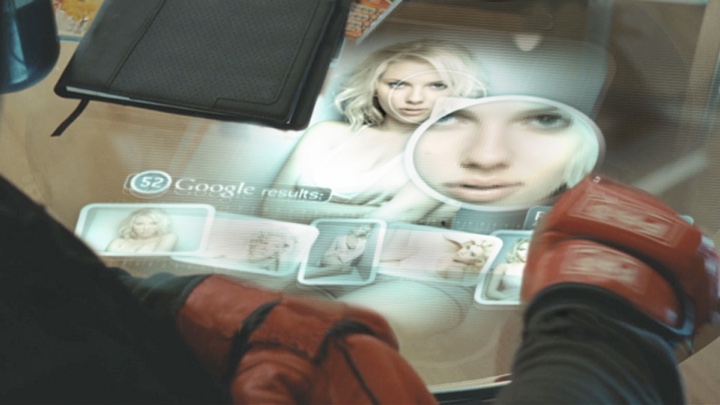
Interface elements for the coffee table in Iron Man 2. Courtesy of Perception.
Continue reading »
Continuing the ongoing series of interviews with creative artists working on various aspects of movie and TV productions, it is my pleasure to welcome Pete Oswald. In the last few years he has worked on “Madagascar: Escape 2 Africa”, both “Cloudy with a Chance of Meatballs” movies, “ParaNorman” and “Hotel Transylvania”. And just a couple of months ago he completed “The Angry Birds Movie” on which he was the production designer. In this interview Pete talks about the magic of animated films, the transition of the industry from hand-drawn animation to CG [computer generated], the yet-unsolved problem of faithfully reproducing human skin, creating animated universes not bound by physical laws of the real world, the job and the responsibilities of a production designer on an animated film, and the overall structure of a production. And as we talk, Pete delves deeper into the details of bringing the Angry Birds story from the original game franchise to the big screen.
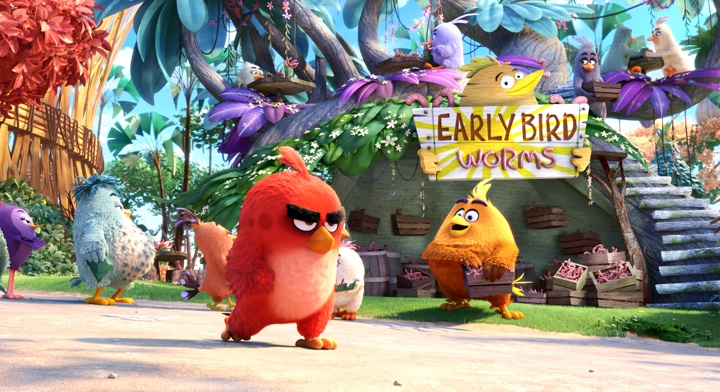
Kirill: Please tell us about yourself and how you got into the animation industry.
Pete: I’ve always been an artist. My mom is a painter and a fine artist. As a child, she would teach art classes in our basement. I would sit in the back and draw all day. I always thought of going into this profession, and when it was time to look at colleges, I didn’t really know that animation was a real job [laughs]. I grew up in Salt Lake City, Utah, far away from Hollywood. I didn’t know you could actually make a living in animation until I started looking at colleges in LA. That’s when I realized that a lot of my drawings had an animated feel to them.
I started doing more research. I read Disney’s “The Illusion of Life” and got hooked. I went to Loyola Marymount University in Los Angeles to study animation and minor in graphic design. From there I was able to get hired to do my first job at the Cartoon Network, and then my career took off after that.
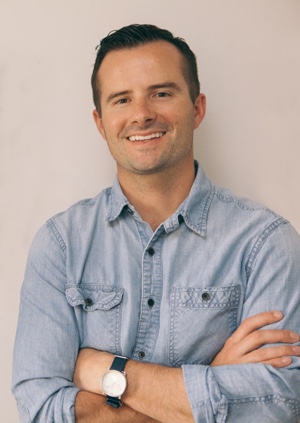 Kirill: When did you start working in the industry?
Kirill: When did you start working in the industry?
Pete: That was around 2003. I got hired by the Cartoon Network to work on the show called “Foster’s Home for Imaginary Friends” as a character designer. I learned so much in my first few years at that studio through some amazing artists. Then I went on to work on “Madagascar: Escape 2 Africa” at Dreamworks. That was an amazing opportunity too because I got to experience my first feature film. After that I went on to work on “Cloudy with a Chance of Meatballs” at Sony. “ParaNorman” at Laika, then back to Sony to work on “Hotel Transylvania” and “Cloudy with a Chance of Meatballs 2”. And now I’ve just finished up “The Angry Birds Movie” on which I was the production designer.
Kirill: Bringing you back to 2003, hand-drawn animation was still going strong.
Pete: Yes, it was. I think we were just starting to get into the CG [computer generated] realm. A few very successful CG films have come out by then – “Toy Story” and “Toy Story 2” and some of the first Shrek film. 2D was still on the cusp and not quite dead yet. In school they wanted to teach us both, because it’s great to learn both mediums and have an understanding of the entire process.
It was really interesting to see the entire transition from 2D to CG. I think at the end of the day it’s all still about storytelling and it becomes a different technical approach. Both are really great, but the computers are so powerful now and they can do anything you want them to do.
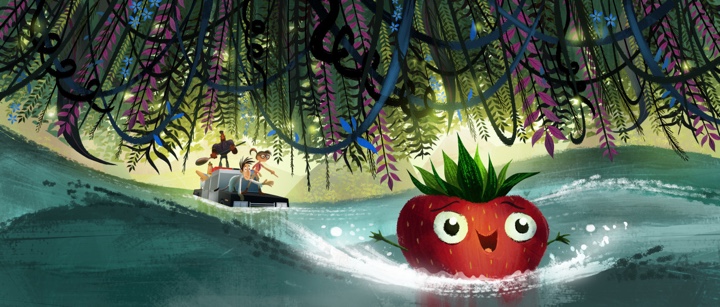
Sketch for “Cloudy with a Chance of Meatballs”.
Kirill: Have we seen the last breath of hand-drawn animation, at least in feature productions?
Pete: I don’t think it’ll ever die. In features I think Disney’s “The Princess and the Frog” was the last American animated feature film. But Studio Gibli is always creating beautiful work out of Japan, and Hayao Miyazaki is keeping the 2D world alive, and it’s so good. It just depends on how you want to tell the story. Right now CG is what audiences want.
Kirill: What is it about CG? Is it the level of detail, the sophisticated look of it?
Pete: I think so. It’s an easier translation to the real world. We can light and texture things, and make it feel like it looks in real world. And whether it’s more cartoony or more realistic, that’s a separate design theory. Because the computer can do that, I think it engrosses the audience and it makes you feel like you’re in that set, or talking with that character. The textures feel real, the lighting feels real, and I think that’s the sophistication that draws the audience to this.
Kirill: And yet nobody’s been able to solve the look of the human skin. It feels like it’s the last big unsolved piece to getting to photorealism in animation.
Pete: That’s always the really tough thing to tackle. There’s really no substitute for human skin. I tend to like CG things that aren’t realistic, that aren’t photo-real. You have to get everything right for it to look exact. Our eyes are so sophisticated. You can immediately tell that it’s off and that it doesn’t look right.
I come from more of a cartoony background where I like to exaggerate and caricature, and I’m not too concerned that the skin doesn’t look realistic. I like to design shapes that are pushed and expressive. It’s more about the story and the emotion of the characters and environments than the photorealistic aspect.
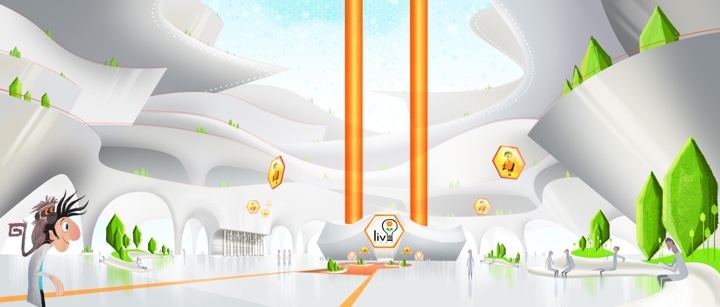
Sketch for “Cloudy with a Chance of Meatballs”.
Kirill: And in stories such as “Madagascar” or “Angry Birds” we might not be looking for the animals to be photorealistic. We’re there to be entertained, and I guess kids don’t care as much either.
Pete: As an audience member, you easily transpose yourself into that world. We’re not concerned that Red from “The Angry Birds Movie” should look like a real bird. We did that on purpose. We made him more anthropomorphic and creature-like. He has a beak and feathers. He’s iconic as a bird, but he’s not a photo-realistic bird. Red had to be appealing and cute because of his anger issues. There’s a great juxtaposition between cute and dangerous. That’s what makes Red a successful character design.
Continue reading »
Continuing the ongoing series of interviews with creative artists working on various aspects of movie and TV productions, it is an honor to welcome Patrice Vermette. His portfolio spans hundreds of TV commercials, dozens of music videos and such recent notable films as “Young Victoria”, “Enemy”, “Prisoners” and his latest “Sicario”. In this interview Patrice talks about getting into the field in the early ’90s, building the trust with his main collaborators and working with the same director on multiple productions, the impact of high-definition shooting and viewing equipment on his craft, the evolution of digital tools for set extensions, what happens to the sets when a production is done and what makes him stay in the industry even after all these long years.
The second half of the interview is about his work on “Sicario”, from the opening compound sequence, to building the sets of the Homeland Security office, the gigantic expanse of the border shootout, and the intricate setups of the underground tunnels.
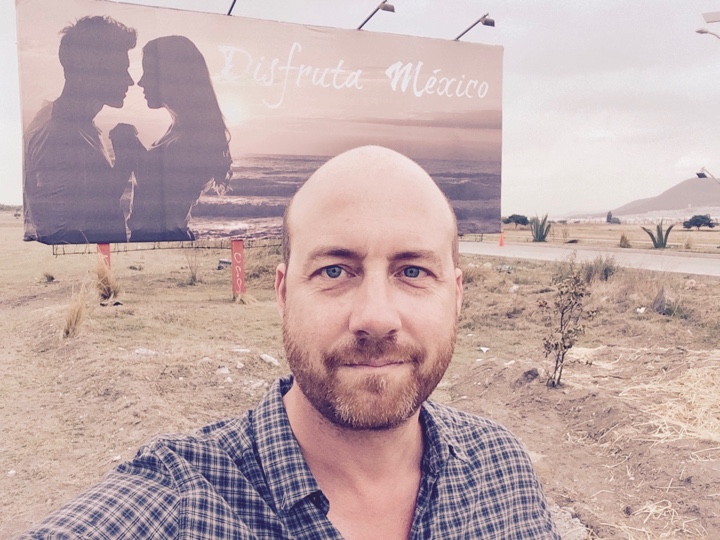
Kirill: Please tell us about yourself and how you got into the industry.
Patrice: My name is Patrice Vermette and I’m a production designer. I got into the industry around early 1991. When I was a kid in 1977, my dad took me to see a movie called Star Wars and it blew me away, and I started recreating those worlds in my parent’s basement. I didn’t know it back then, but it was the seed that was growing inside me – to want to have that in my life.
I grew up in Montreal, Quebec, and it wasn’t necessarily a reality for us. It wasn’t US or France or Germany or England. The local movie industry was looking much more towards documentaries or political comments.
In 1990 I graduated from the communications program at Concordia University in Montreal. My dream was to make soundtracks and produce albums. In late 1990 / early 1991 I was doing PA work on commercials, and in March 1991 I was invited to work on a video on which the art director showed up totally stoned [laughs]. I had a friend who would come to see my band live, and for those performances I used to make a new decor for each show. That friend was working as a grip on that video, and he introduced me to the director, telling him that maybe I could help out, as the next day the shooting was starting, and nothing was being done.
That director offered me the job, as he pretty much had no choice [laughs]. I said that it wasn’t really what I did for a living, or wanted to do, but I promised to give it my best shot. The next day we had a set standing up with some help from my good friends that had never done that in their life either. And from that day on that director offered me all his jobs as a production designer.
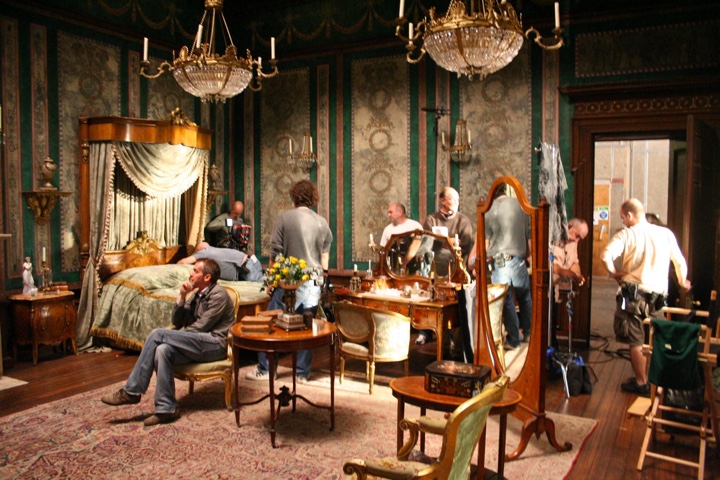
Princess Victoria and Duchess of Kent’s Kensinton Palace Bedroom on “Young Victoria” at Shepperton Studios 2007. Courtesy of Patrice Vermette.
I kind of learned it while I was doing it. I learned so much from my mistakes. Then as you keep on doing music videos, you feel strong enough to start doing commercials. In commercials you meet directors who dream of getting financing to get their movies going. So through these commercials I’ve met the wonderful director Jean-Marc Vallée, and in 2004 we made a movie together called “C.R.A.Z.Y.”
That movie had huge success in Canada and a lot of people saw it at festivals throughout the world, and it gave wings to both of us. Those were my early years.
Kirill: How was it seeing the scope of a feature film for the first time?
Patrice: I used to do pretty big commercials, so it wasn’t a very big transition. I saw that I would work for a longer period of time, and work with characters. I think of production design as the back beat, the baseline, the drums that create the visual rhythms for a story, and that’s always been my approach. If it’s a good story, and I always try to choose my movies based on that, it’s always challenging and exciting.
You might have a small budget or a big budget, but it’s always about the story and the script for me. It’s always quite exciting to support the story and to be invisible. That’s always one of my goals – not to show off, just to be invisible and help tell the story.
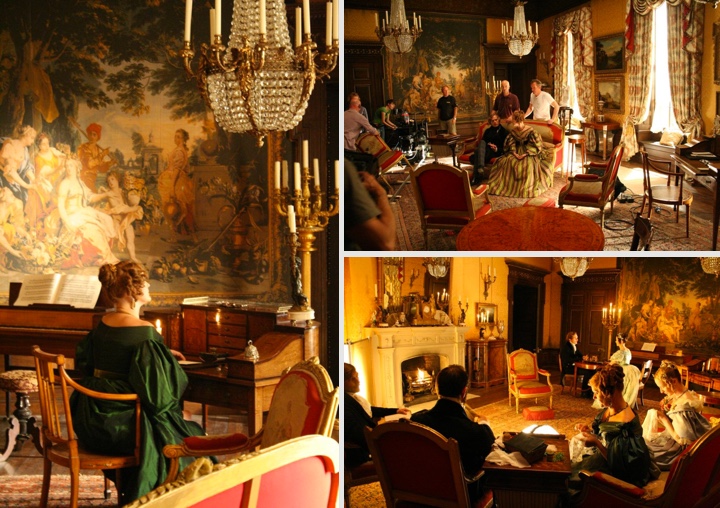
Duchess of Kent Drawing Room on “Young Victoria” at Shepperton Studios 2007. Courtesy of Patrice Vermette.
Kirill: You’ve started working 25 years ago. Have things changed much for you? We’ve seen the high-def projection equipment and home TV sets taking over, and almost everything is done digitally. Does that require you to be more detailed and precise with your sets?
Patrice: Of course. You have to be so detailed. When I started doing music videos, that was on 16mm. Then we moved up to commercials and 35mm. Now we’re working with 4K cameras. Everything needs to be so precise, and I feel that it’s super-exciting, because no producer will now tell you that nobody would see something. People will see that, and it’s important to be very thorough on the finishes and details. The camera sees everything now. There is nowhere to hide.
It’s also changed a lot for make-up, hair and scenic painters. Everybody needs to be at the top of their game, because a lot of the things that used to work in front of the camera now do not. The technology has put an extra pressure on us to be very detailed in our work.
Kirill: Does it help to have digital monitors on the set so that you can immediately see what the camera sees?
Patrice: The playback system and the monitors really help. When I started, it already existed, but it was black-and-white and all blurry. We used to bet among the people on the set of a commercial how long it would be until someone from the agency would ask “Is it going to be that blurry and bad?”
Now that we’re living in the digital age, the monitors are great. I think that it took away a lot of “secret” powers from the DP [director of photography]. What you see is what you get, and the DP is no longer seen as the magician. It gives the rest of the crew an opportunity to see how it looks. It really helps everybody, and we’re all less annoying to the DP. We used to ask to look at the set through the camera’s view finder. It’s a great tool now.

A quiet and peaceful maze like neighbourhood on “Prisoners”. Courtesy of Patrice Vermette.
Continue reading »
His first feature film was the seminal “Sky Captain and the World of Tomorrow”. Later on he was part of the team that won the Oscars for best achievement in visual effects on “Golden Compass” and “Life of Pi”. And just some of his recent work includes “Captain America: The Winter Soldier”, “Fast and Furious 7”, both parts of “The Hunger Games: Mockingjay” and the most recent “Captain America: Civil War”. It gives me great pleasure to welcome Jay Grunfeld to the ongoing series of interviews on fantasy user interfaces.
In this interview Jay talks about his last ten years working primarily as a digital compositor on a variety of productions, the ongoing evolution of tools and artistic capabilities of software tools at his disposal, holographic screens and their applicability in the real world, and his excitement about the virtual reality revolution. We also talk about his work as the visual effects supervisor on “Mockingjay”, its technology, screen and holographic projections.
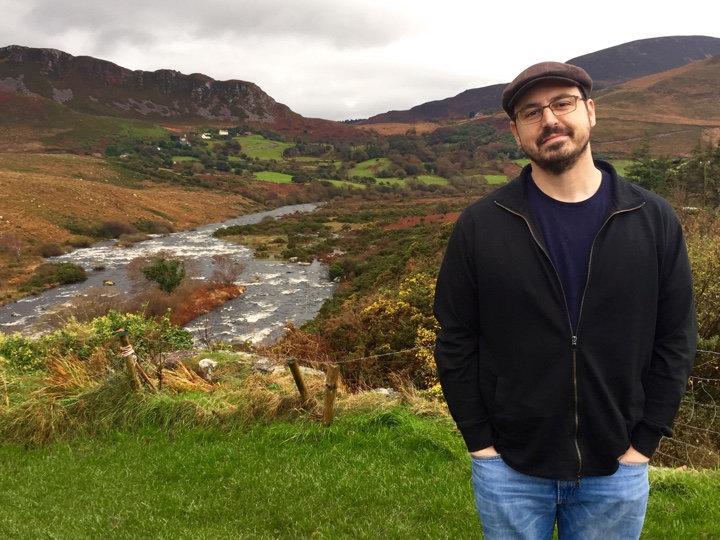
Kirill: Please tell us about yourself and your professional path so far.
Jay: My name is Jay Grunfeld and I work as a visual effects compositor/supervisor. I was born in Brooklyn, New York and was raised in New City, NY, a suburb of NYC in the Hudson Valley. Growing up, art and talent surrounded me. My parents knew early on that I had an eye and encouraged me to take courses at the Arts Students League and the School of Visual Arts for high school students, in addition to providing me with private lessons as well. My greatest influence is my dad, a graphic designer and a graduate of Art Center here in LA. We worked on a bunch of projects together and he was always encouraging me to try everything and anything because it always leads to something.
I went on to study photography at Cal Arts. The idea of capturing a moment in time within a frame always intrigued me but now, I create instead of capture. Unfortunately, Cal Arts suffered terrible damage due to the Northridge quake of ’94, so I spent the next six months in NY and began learning Photoshop.
After college I became interested in motion graphics. One of my early jobs was at The Picture Mill. This is where Stephen Lawes and I first met. Stephen would later hire me for my first job as a compositor on “Sky Captain and the World of Tomorrow.” “Sky Captain” was a truly innovative film as a good portion of it was computer generated. It was a feeling of freedom with an entire large canvas to create. It was on this film that I knew I had found the work I wanted to pursue.
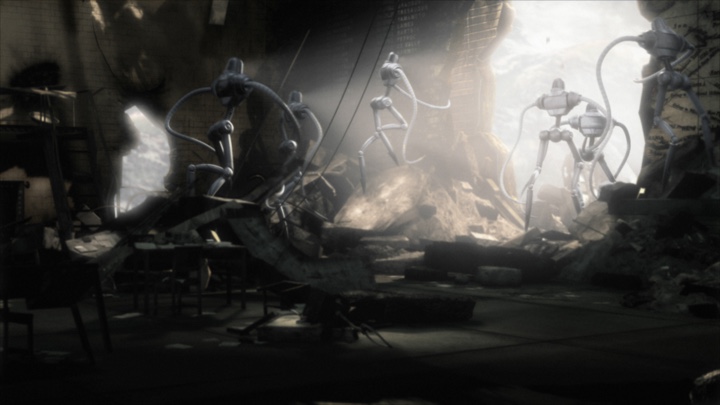
Scene from “Sky Captain and the World of Tomorrow”. Courtesy of Jay Grunfeld.
I spent the next few years working at Entity FX as a compositor, which led to Rhythm & Hues where I was part of the creative team that earned Oscars for “The Golden Compass” and “Life of Pi.” I am incredibly proud to have been a part of these films. You could say I earned my masters in compositing at R&H.
Presently, I am working at Cantina Creative. Stephen Lawes and Sean Cushing, co-owners of Cantina, have created a special, supportive environment in which to work. They both encouraged me to try my hand at supervising, which is very challenging and fulfilling. Wearing a different hat within the process I thought I knew so well was humbling.
Kirill: What drew you into the movie industry? If you go back to the time when you just started on your first feature film productions and some of the expectations that you had, how close (or far) has the reality of working in the industry turned out to be?
Jay: I never imagined working on feature films so I really had no expectations. I was always leaning towards fine arts/photography. After my experience with “Sky Captain,” I fell in love with VFX. It is extremely challenging but so rewarding. I knew then I wanted to spend my days in VFX. It’s really about the team aspect of working with different types of artists, each with their own specialty, putting their collective talents together for the same purpose.
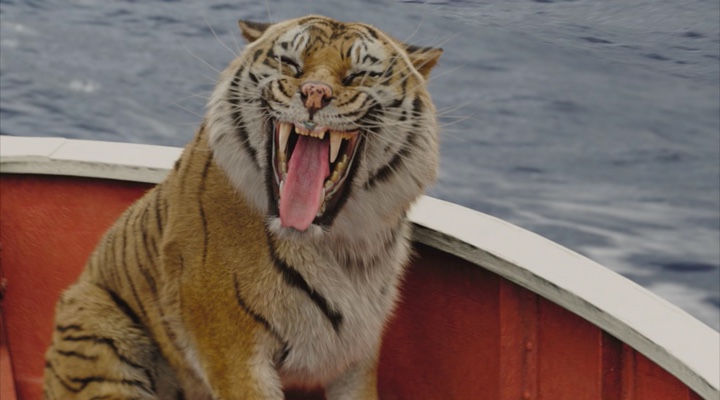
Tiger smile from “Life of Pi”. Courtesy of Jay Grunfeld.
Continue reading »
![]() Kirill: Please tell us about yourself and your path so far.
Kirill: Please tell us about yourself and your path so far.![]()
![]()
![]()